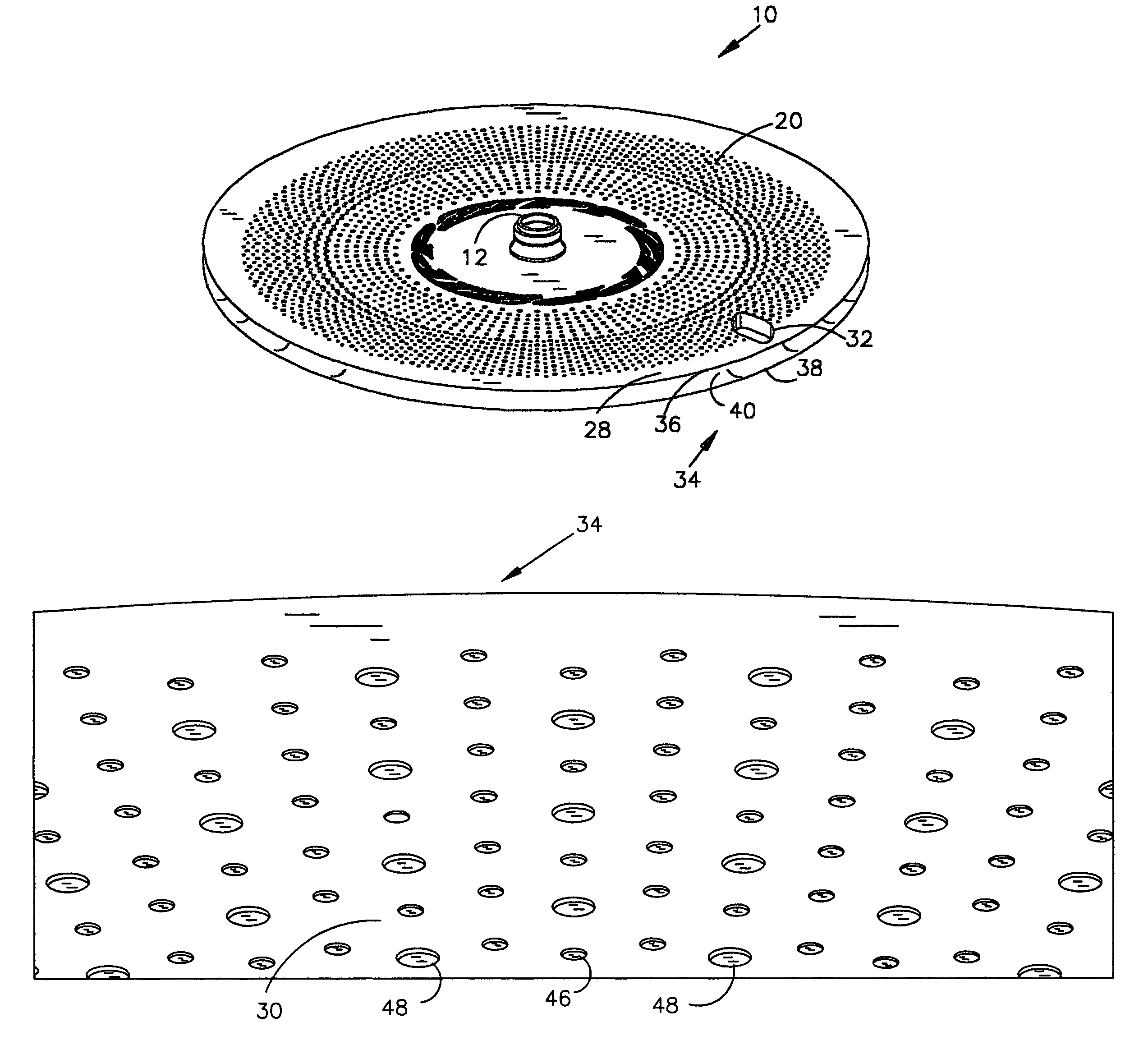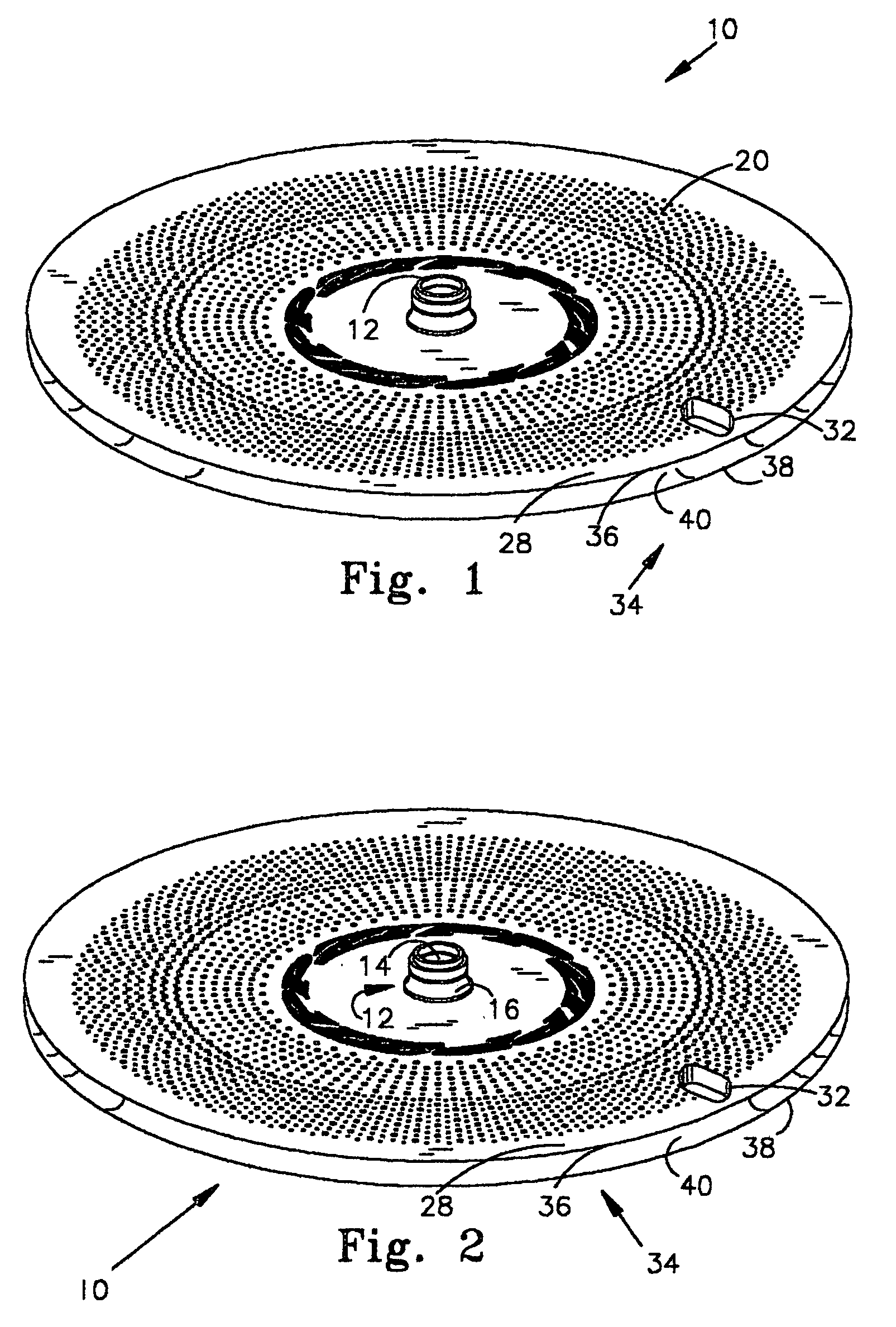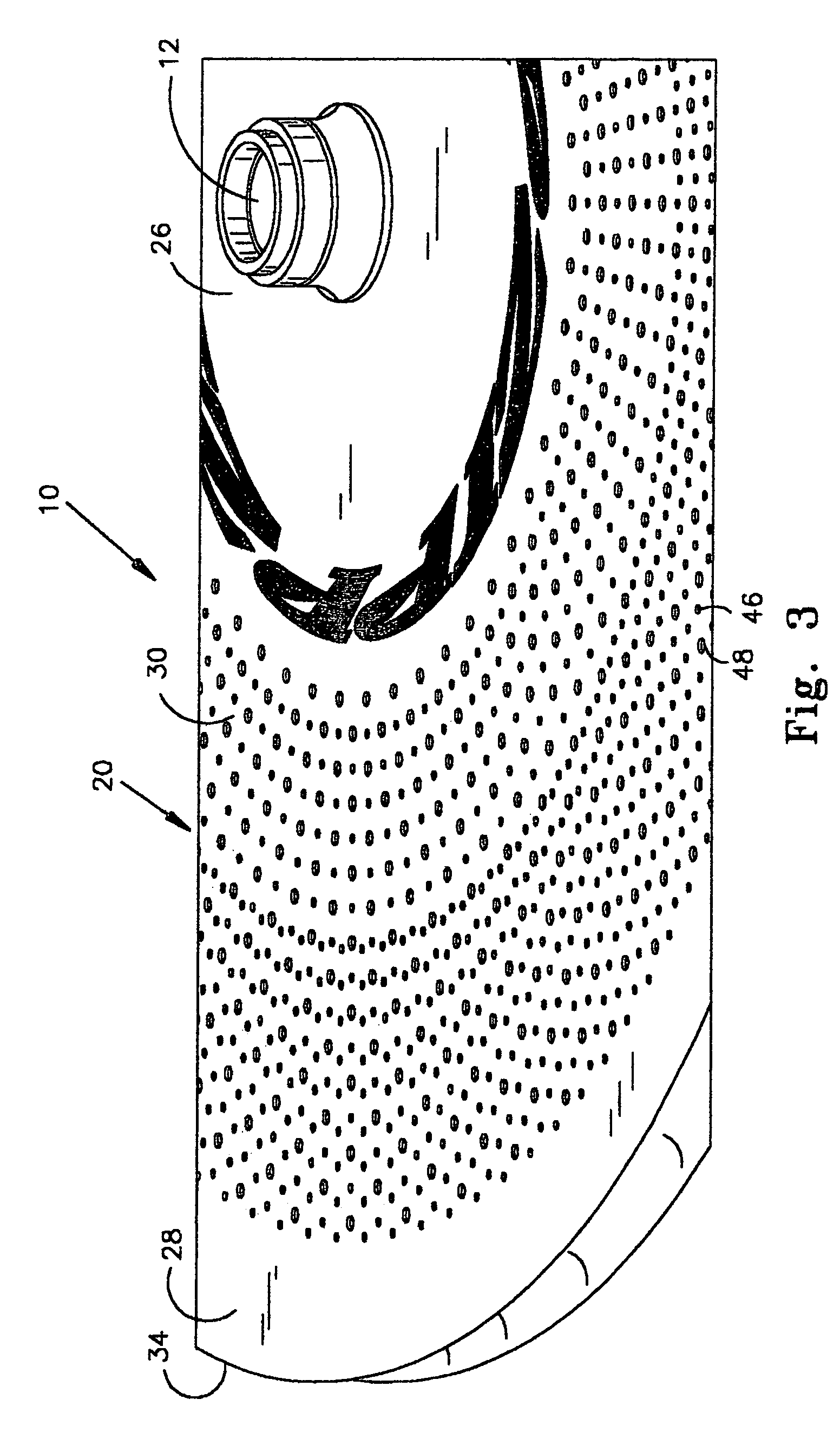Aerodynamic surfaced bicycle wheel
a bicycle wheel and surface technology, applied in the field of wheels, can solve problems such as greater drag, and achieve the effect of reducing aerodynamic drag on the wheel
- Summary
- Abstract
- Description
- Claims
- Application Information
AI Technical Summary
Benefits of technology
Problems solved by technology
Method used
Image
Examples
Embodiment Construction
[0035]FIGS. 1–7 illustrate an embodiment of a disc type bicycle wheel 10 which is generally circular or disc-shaped, and includes a hub portion 26 with a hub 12 at its center, a tire engaging portion 34 at its radial perimeter, and first and second axially-opposed, air engaging surfaces 20, 22 extending from the hub portion 26 to the tire engaging portion 34.
[0036]The wheel 10 shown in the figures is composed primarily of a core that may either be hollow, filled with foam, or contain some foam and hollow spaces, such as in the honeycomb type core used by the Applicant. The core is overlain with a carbon fiber composite material which forms the first and second air engaging surfaces 20, 22. In this regard, the wheel 10 shown in FIGS. 1–7, has an exo-skeletal structure where the carbon fiber skin provides a majority of the wheels' shape and structural strength, with the interior core, if any, being used for a filler material to aid in the manufacture of the carbon fiber wheel 10. Addi...
PUM
| Property | Measurement | Unit |
|---|---|---|
| depth | aaaaa | aaaaa |
| depth | aaaaa | aaaaa |
| diameter | aaaaa | aaaaa |
Abstract
Description
Claims
Application Information
 Login to View More
Login to View More - R&D
- Intellectual Property
- Life Sciences
- Materials
- Tech Scout
- Unparalleled Data Quality
- Higher Quality Content
- 60% Fewer Hallucinations
Browse by: Latest US Patents, China's latest patents, Technical Efficacy Thesaurus, Application Domain, Technology Topic, Popular Technical Reports.
© 2025 PatSnap. All rights reserved.Legal|Privacy policy|Modern Slavery Act Transparency Statement|Sitemap|About US| Contact US: help@patsnap.com



